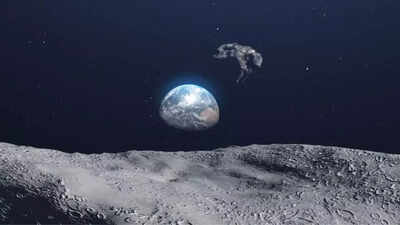- News
- Science News
- Is the Moon at risk from asteroid 2024 YR4? Here’s what you need to know
Is the Moon at risk from asteroid 2024 YR4? Here’s what you need to know
Asteroid 2024 YR4 no longer poses a significant threat to Earth. NASA now considers the risk minimal. There is still a 1% chance the asteroid could hit the Moon. Scientists continue to monitor its trajectory closely. This ongoing observation is crucial for planetary defense and ensuring lunar safety in the future.
Asteroid 2024 YR4, previously thought to pose a threat to Earth as per reports, but now has been cleared of any significant threat to our planet. But there remains a low-level threat for the Moon. The path of the asteroid is still being monitored by scientists as it remains close to both Earth and the Moon. This situation highlights the importance of ongoing observation to accurately track asteroids and assess any future risks.
NASA confirms lower risk of asteroid 2024 YR4
As per recent reports, NASA said the risk of asteroid 2024 YR4 colliding with Earth has reduced significantly. The earliest astronomers had estimated the chances of collision at 3%, which they later reduced to as low as 0.28%. This was after carrying out a comprehensive re-computation of the asteroid's trajectory and other data. While the Earth is no longer in danger, NASA is not relaxing its guard and will continue to keep the asteroid under close surveillance to monitor whether there is any alteration in its path.
Is the Moon at risk?
NASA monitors asteroid 2024 YR4
Asteroid 2024 YR4, which was found on December 27, 2024, by astronomers at Chile's El Sauce Observatory, is quite massive, having a diameter of 40 to 90 meters. Although as large as it would cause devastation if it were to hit Earth, the new trajectory of the asteroid removes it from immediate danger's grasp. Its initial projected first date for hitting Earth, on December 22, 2032, is rendered obsolete by the fact that the asteroid now moves away from our planet. Scientists still monitor the asteroid in April of 2025, when it will not be visible until 2028.
Although it has minimized the threat to Earth, NASA's Center for Near-Earth Object Studies (CNEOS) will still follow the course of the asteroid. With the data still fluctuating, NASA's planetary defense team will still fine-tune their projections and be prepared for any shift in the asteroid's path. The monitoring is being done to keep us alerted and prepared for anything.
Also Read | Elon Musk's SpaceX set to launch third moon landing mission of 2025 on February 26

About the Author
TOI Science DeskEnd of Article
FOLLOW US ON SOCIAL MEDIA

